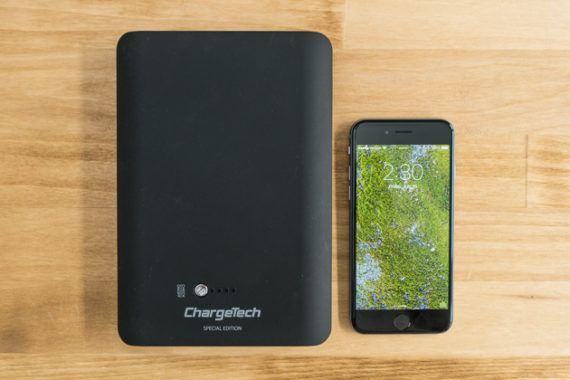
Technology
All you have to know about the portable AC power supply
To narrow down the top choices, we utilized the following standards.
Power caliber: The most important factor that separates this kind of battery pack from a typical USB electricity bank is the fact that it comes with an AC socket, made possible by a little inverter inside. Inverters flip the DC power stored in a battery to AC power, or so the package can power doodads which have a power cord having a regular 2- or three-prong household plug. However, not all of inverters are made equal, and some produce waveforms with sharper peaks and also much more irregular voltage changes compared to uniform electricity your utility provider sends to your residence. To check the quality of the inverters, we hooked every bunch up to a virtual oscilloscope supplied by BitScope and examined that the waveform amplitude, frequency, and sound, using grid electricity from a construction outlet as our benchmark. Since most modern power supplies for laptops and telephones do a fantastic job of managing power variant, we believed modified-sine-wave (MSW) inverters to be acceptable in smaller packs provided that the tide was a modified sine rather than a square wave, and did not include an excessive amount of sound–high voltage oscillations–which could interpret through to a apparatus.
Maximum power output: As a breaker trips in your home once you’ve got too many things on a single circuit, a battery package will close down as a security precaution should you plug into a system that requires more electricity than the battery pack might offer. To be helpful, smaller AC battery packs have to have the ability to take care of a reasonably sized notebook, which might require up to 60 watts. Bigger components, which you may call on to control multiple devices while camping or place to service as the sole power supply in a crisis, ought to have the ability to take care of up of 200 W with no problem. In any circumstance, the power-output figure applies only to the total amount of power which you may use at any 1 time, not just how long the package can sustain it. (The latter is that the package’s capacity, which we will get to soon.) We analyzed the most output of every pack by tracking the draw from several dummy loads–such as lights and USB heaps plugged into knobs–using a typical Kill A Watt meter, raising the load in 10 W increments before the bunch closed down.
Price: Small packs are available for as little as $150, while huge power stations to electricity large campsites for a week could easily soar past $1,000. When you are considering the price tag, we think that it’s more helpful to appraise the value of the battery capacity in place of the sticker price. Normally, a lower price per watt-hour is a much better value, and a higher cost for the same capacity has to be balanced out with added features such as higher output, additional outlets, or useful accessories.
Dimensions and weight: Thanks to using the exact same sort of lithium ion batteries utilized in laptops and phones, the top packs for charging laptops and other small devices weigh less than 3 lbs and aren’t much bigger than a small hardcover book or a couple of glass. However, the larger power stations vary substantially in size and burden since the earliest versions available used lead-acid batteries, similar to the starter battery in many automobiles, as the primary power supply. Lead-acid batteries are less energy dense, therefore any power station built around one needed to be big and heavy–often approximately 30 pounds. Newer versions released in the previous two years have taken advantage of falling battery costs and switched to lithium cells instead. That layout shift has cut the weight in half and lower the volume by around 30 percent. But at 15 lbs or so, even these newer svelte electricity stations are too large for most people to pop in a back pack and increase to a campsite, and the batteries that are improved require a higher cost that we are not sure is worthwhile. It follows, then, that 10 W for 2 hours will be 20 Wh (10 W × 2 h = 20 Wh), etc. A laptop like a 15-inch MacBook Pro includes a battery capacity of around 76 Wh, while a smartphone is nearer to 11 Wh. For smaller battery packs with AC sockets, we expect that a high enough capability to charge most notebooks at least one time–70 Wh or even better is a good baseline. Larger electricity stations, however, might have to provide multiple fees over the duration of a few days, so a greater capacity is much more useful; our big selection has a 400 Wh capacity, and we would not consider anything lower than that. To test capacity, we billed each bunch fully and then ran down it with a 50 W light, recording the time and accumulative power output.
















0 comments